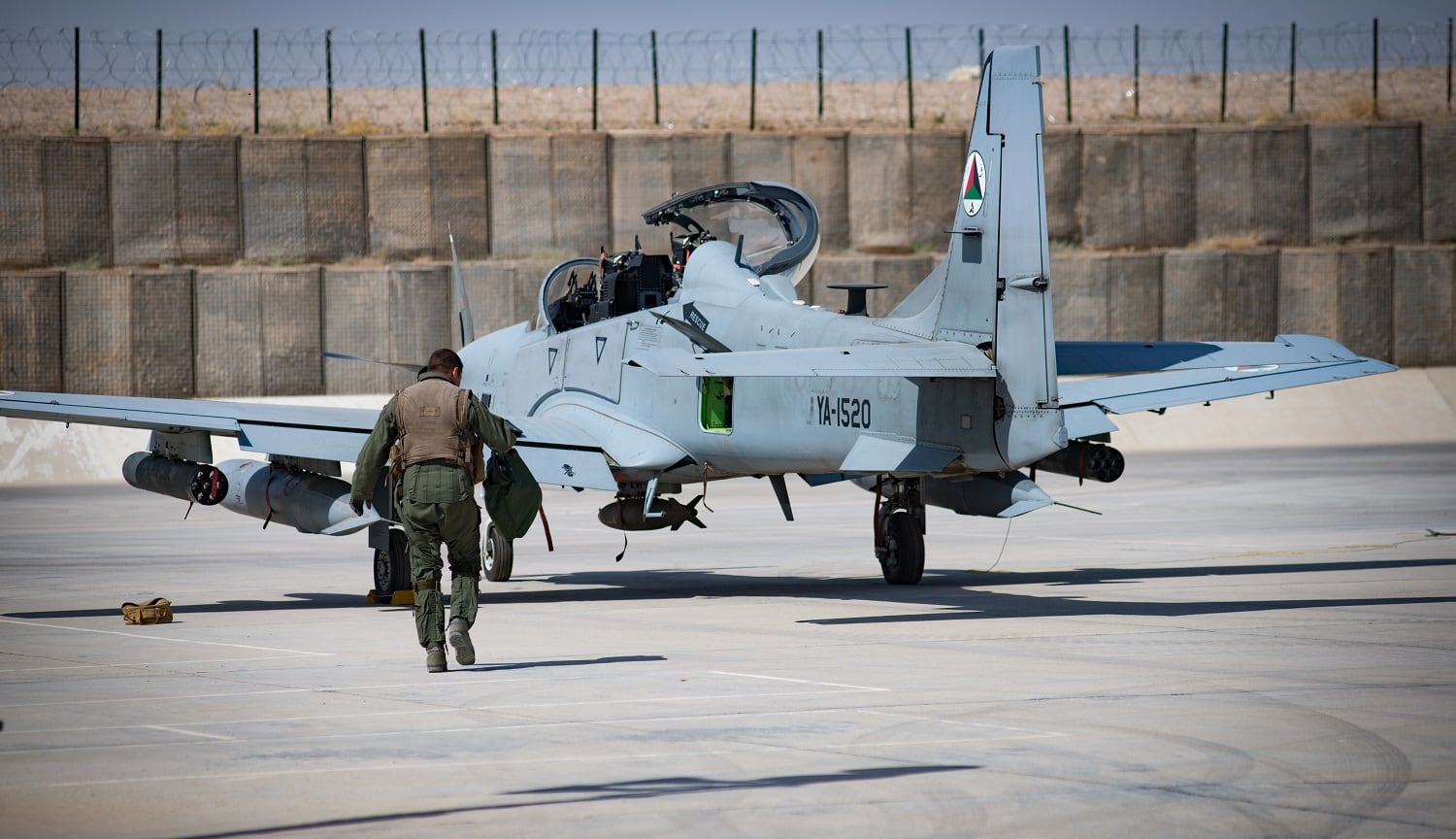Correction: This story has been updated to amend the total number of UH-60s that will be acquired by the Afghan Air Force.
DUBAI, United Arab Emirates — Over the next six years, the U.S. military and its coalition partners will invest $7 billion to augment the size of the Afghan Air Force, including a more than twofold increase to the country’s aircraft fleet.
Under current plans, NATO wants to boost the size of the Afghan Air Force from 8,000 to 12,000 troops and grow its inventory from 124 to 259 aircraft, said Brig. Gen. Phillip Stewart, the U.S. Air Force commander in charge of NATO’s Train, Advise, Assist Command-Air (TAAC-Air) mission in Afghanistan.
Click here for full coverage of the Dubai Air Chiefs Conference and Dubai Airshow.
That overhaul will involve not only more A-29 Super Tucano combat planes, but upgunned UH-60FFF helicopters and commercial aircraft modified for the surveillance mission, he told Defense News in a Nov. 9 interview. The U.S. Defense Department’s share of the weapons procurement bill amounts to roughly $814 million, which was funded in fiscal year 2017 through the Overseas Contingency Operations Afghan Security Forces Fund.
When the United States invaded Afghanistan in 2001, the latter country’s air combat capability had atrophied since its heyday in the 1970s, when it was the beneficiary of Russian training and equipment.
In 2001, the Afghan military had “zero flying airplanes” and no active pilots, Stewart said. “They still had some [air] officers but they had blended back into the Army.”
With help from NATO, Afghanistan has added 24 C-208s for light airlift, four C-130s for cargo and troop transport, 24 MD-530s, 19 A-29s and two UH-60 Black Hawk utility helicopters. Another two Black Hawks are due to be delivered within the month, Stewart said. And on top of that, the Afghan military also operates 45 Mi-17 helicopters and four Mi-35 attack helicopters, both manufactured in Russia.

Next year, the Afghan Air Force will receive yet another new platform: the AC-208, a militarized version of the Cessna Caravan that will be tricked out with an intelligence, surveillance and reconnaissance package. The U.S. Air Force in September awarded Orbital ATK an undefinitized contract worth up to $69.4 million to produce the modified plane.
The company is slated to deliver three AC-208s next year, and Afghan pilots are already undergoing training so that they can jump into the cockpit and be ready to fly during the next fighting season, Stewart said.
“That’s going to be their reconnaissance bird. They don’t have any reconnaissance right now. That’s going to be a gamechanger for them,” he said. “It’s also going to allow them to shoot laser-guided rockets,” a new precision-guided weapon for the Air Force, which can currently only drop smart bombs from the A-29.
After 2018, Orbital will deliver about six AC-208s a year until the end of 2023, when it will have a total 32 ISR planes. However, a TAAC-Air spokesman notes that its possible that only 24 AC-208s are acquired in total.
A couple hundred Black Hawks will also be making their way to the Afghan Air Force from now until 2022, pushing its number of UH-60s to 119 by 2022. Instead of buying new Black Hawks from Lockheed Martin, the U.S. military is giving Afghanistan old A-models remanufactured with UH-60L engines, which will help boost the helicopter’s ability to fly in high and hot environments, Stewart said.
Fifty-eight of those helicopters will be a more lethal UH-60FFF version with rockets and, possibly, a .50 caliber gun. The U.S. plans to give Afghanistan up to 159 UH-60s total.
“We’re training the very first Afghan pilots now,” he said. The helicopters “are going to start showing up almost two per month for the next five or six years. … We’re going to train crews commensurate with that to fly [them]. That’s one of our major jobs right now, to train those crews. And they’re going to go to war in the very next fight.”
By the end of 2020, the UH-60’s will be doing the lion’s share of the mission currently performed by Afghanistan’s aging Mi-17s. The country’s inventory of aging Mi-17s will trickle from 35 in 2018 to 15 in 2020 before all are divested by the end of 2021.
Meanwhile, more MD-530 light scout helicopters, which are made by MD Helicopters, will also be coming online. The company will deliver another 10 helicopters in 2018 and 20 more in 2019, pushing the Afghan Air Force’s total number to 55 MD-530s.
RELATED

The Afghan military will also get more A-29 attack planes in the next several years. In October, Sierra Nevada Corp. and Embaer—the aircraft’s U.S. prime contractor and the Brazilian original manufacturer—announced that the U.S. Air Force put it under a $174.5 million contract for six additional aircraft, aircraft parts, maintenance spares and transportation to training locations.
Stewart said that, under NATO’s current strategy, there are no plans for follow-on A-29 orders for Afghanistan at this time.
Valerie Insinna is Defense News' air warfare reporter. She previously worked the Navy/congressional beats for Defense Daily, which followed almost three years as a staff writer for National Defense Magazine. Prior to that, she worked as an editorial assistant for the Tokyo Shimbun’s Washington bureau.








